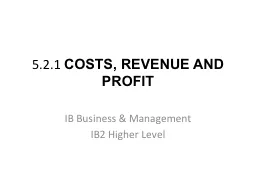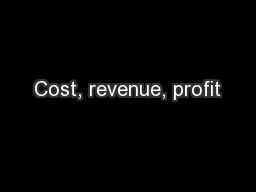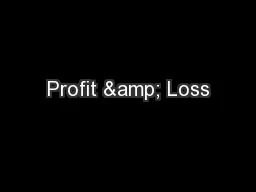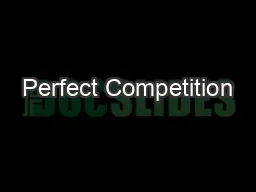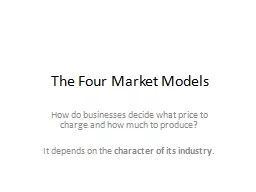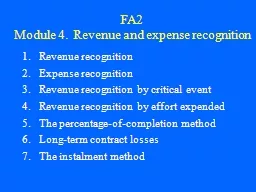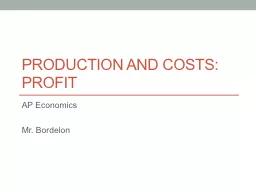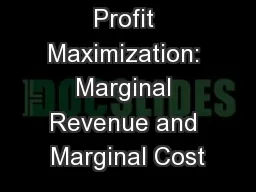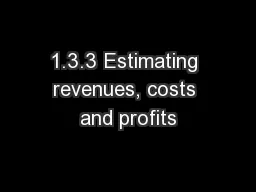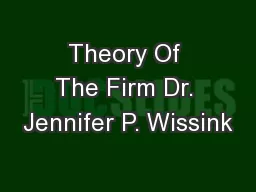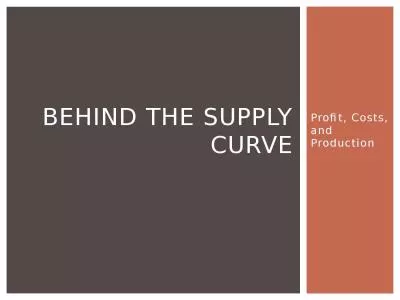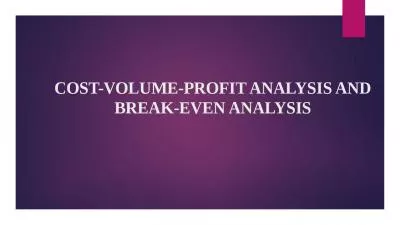PPT-5.2.1 COSTS, REVENUE AND PROFIT
Author : criticanime | Published Date : 2020-06-19
IB Business amp Management IB2 Higher Level Objectives By the end of the lesson students should be able to To classify costs as fixed variable semivariable direct
Presentation Embed Code
Download Presentation
Download Presentation The PPT/PDF document "5.2.1 COSTS, REVENUE AND PROFIT" is the property of its rightful owner. Permission is granted to download and print the materials on this website for personal, non-commercial use only, and to display it on your personal computer provided you do not modify the materials and that you retain all copyright notices contained in the materials. By downloading content from our website, you accept the terms of this agreement.
5.2.1 COSTS, REVENUE AND PROFIT: Transcript
IB Business amp Management IB2 Higher Level Objectives By the end of the lesson students should be able to To classify costs as fixed variable semivariable direct indirect To understand the importance of profit quality . Based on the books: . Building Lean Supply Chains with the Theory . of . Constraints . M. anaging . Business Process Flow . Throughput Profit Multiplier (TPM). A large fraction of the operating costs are fixed . Marginals. for linear functions. Break Even points. Supply and Demand Equilibrium. Applications with Linear Functions. Cost, Revenue, Profit, . Marginals. Cost: C(x) = variable costs + fixed costs. Revenue: R(x) = (price)(# sold). A business needs to keep track of all their income - . REVENUE. and EXPENSES.. Any money coming in to a business is recorded as revenue.. Any money going out of a business is known as an expense.. For a business to be profitable their revenue must be greater than their expenses.. Demand for the product of a perfectly competitive firm. P. rice determined . by . S & D. P. rice . taker . Won’t charge higher or lower than market price. H. orizontal (perfectly . elastic) at . How do businesses decide what price to charge and how much to produce?. It depends on the . character of its industry. .. Classroom Concerns. Attendance Issues* 15 Limit. Tardiness. Uniform. Assignment Completion. 1. Revenue recognition. Expense recognition. Revenue recognition by critical event. Revenue recognition by effort expended. The percentage-of-completion method. Long-term contract losses. The instalment method. RyanAir. Melissa Chen, David . Gruen. ,. How-Chin Liu,. John . Masline. RyanAir. Launch Strategy. Revenue Assumptions:. An average of 70% capacity. Runs 365 days in a year. Price is I. ₤. 98 per passenger. AP Economics. Mr. Bordelon. Profit. Profit.. . . T. otal revenue minus total cost. π means “profit.”. π = TR – TC. Total revenue.. Price of output times the quantity sold.. TR = PQ. Total cost.. Marginal Revenue (MR): . Change. in the firm’s total revenue resulting from a . one unit change. in production.. Marginal Cost (MC): . Change. in the firm’s total cost resulting . from . a . one unit change . Sir went to Iceland!. On the way to school this morning I called into Iceland . I bought 10 boxes of Strawberry and Vanilla ice cream cones and 10 boxes of Choc and Nut ice cream cones. Each box cost £1 and has 6 cones in it. ©2011 John M. Abowd and Jennifer P. Wissink, all rights reserved.. What Is A Firm?. Broadly: A firm is an organization producing goods or services, also called a business.. Examples of common businesses: . Taradevi Harakh Chand Kankaria Jain College. Cossipore, Kolkata -700002. Nature of profits:. Profit is a reward of the entrepreneur, rather of the entrepreneurial functions. Profit differs from the return on other factors in 3 important respects:. Behind the Supply Curve. Profit . Profit = Total Revenue – Total Cost. Primary goal of a firm is to maximize profit. Can be done in two ways. Increase revenue. Reduce costs. What types of costs exist?. CHAPTER OBJECTIVES. Meaning of Cost-volume-profit analysis. . Objectives . of Cost-volume-profit . analysis. Assumptions of Cost-volume-profit analysis . T. echniques . or elements of Cost-volume-profit analysis..
Download Document
Here is the link to download the presentation.
"5.2.1 COSTS, REVENUE AND PROFIT"The content belongs to its owner. You may download and print it for personal use, without modification, and keep all copyright notices. By downloading, you agree to these terms.
Related Documents

